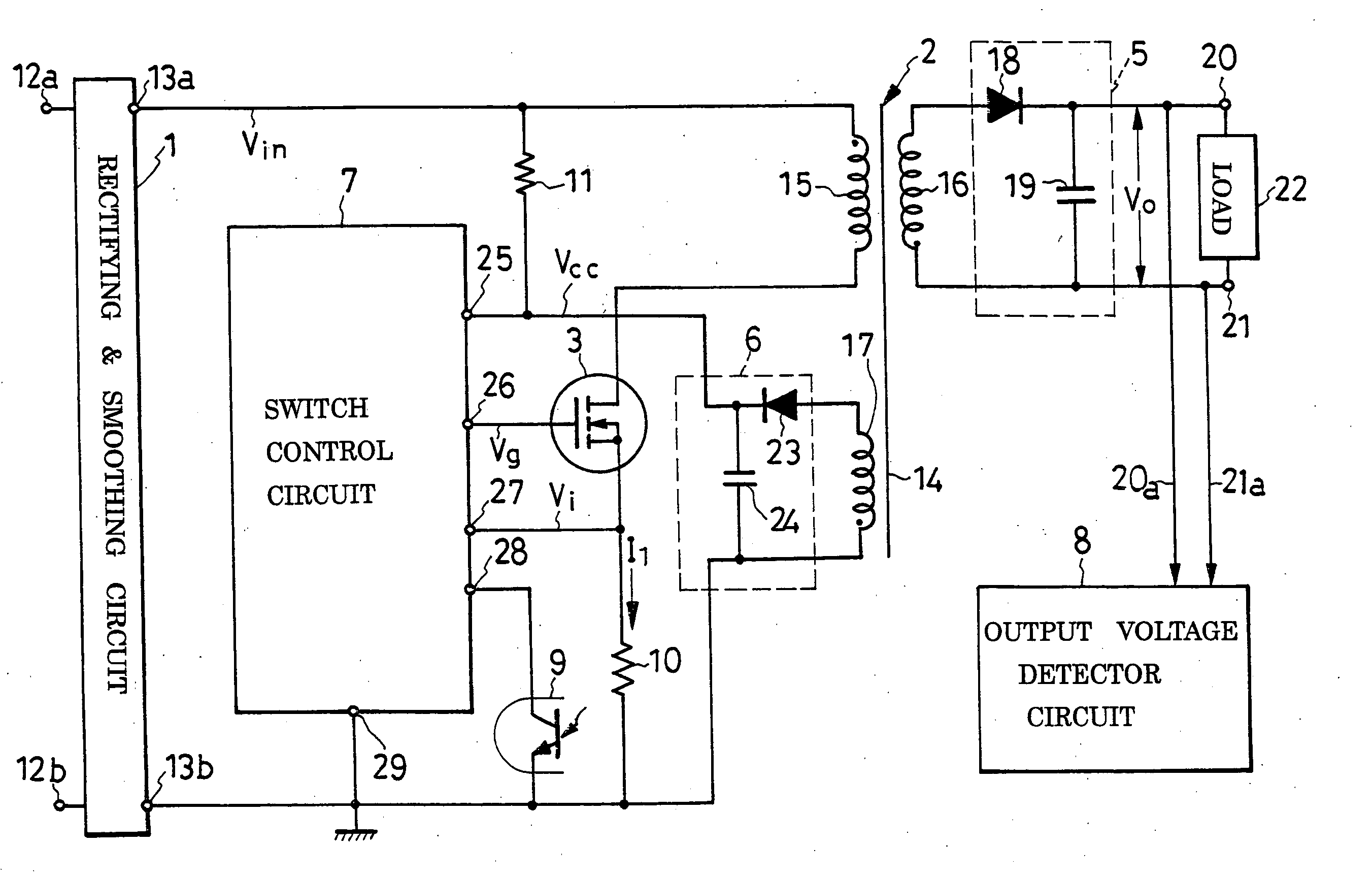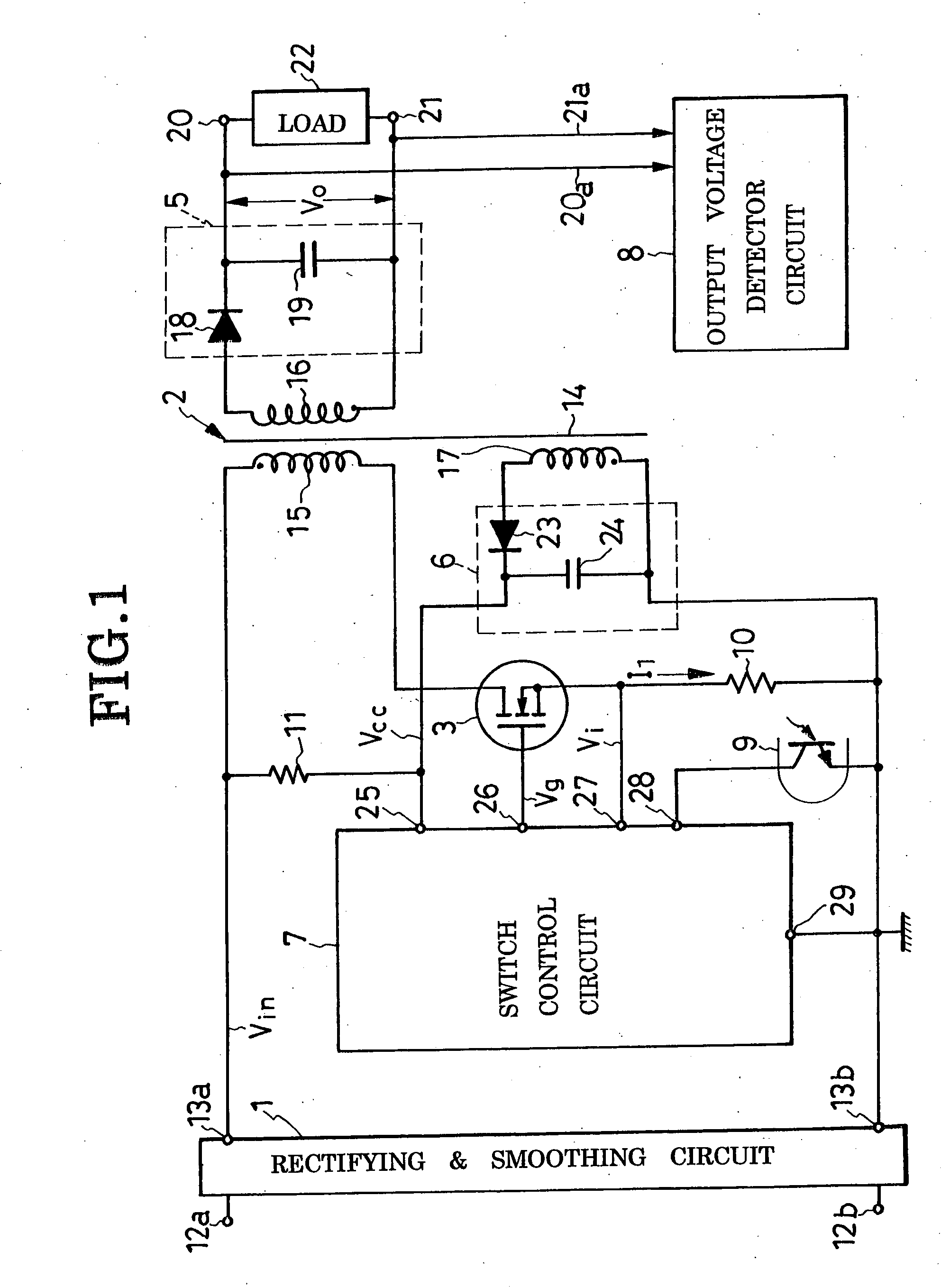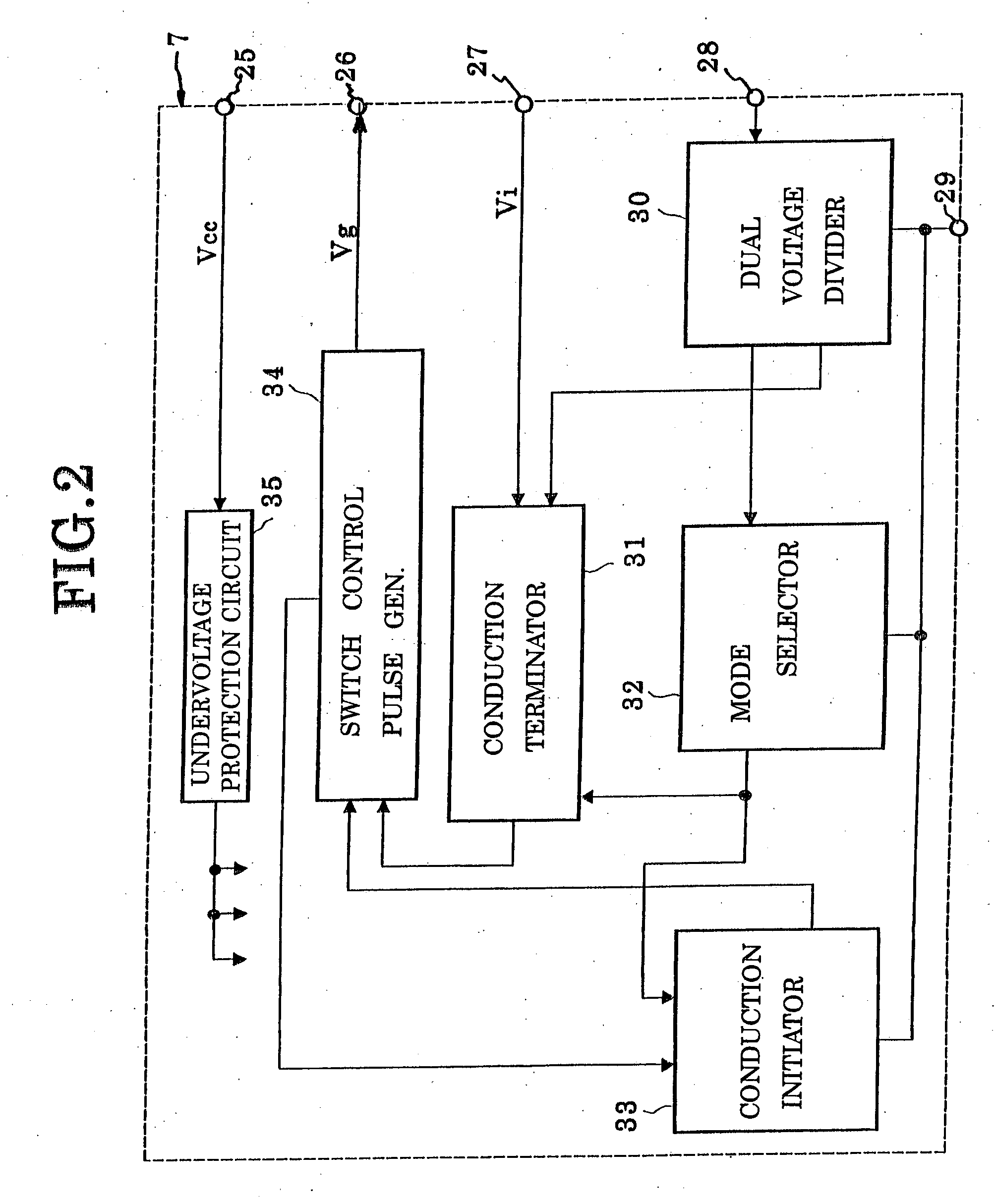Switching dc power supply
a dc power supply and power supply technology, applied in the direction of electric variable regulation, process and machine control, instruments, etc., can solve the problems of power loss, switching loss too high for the power being consumed, and some problems left unresolved in the dual-mode driving of the voltage regulator switch, so as to achieve the effect of minimal interferen
- Summary
- Abstract
- Description
- Claims
- Application Information
AI Technical Summary
Benefits of technology
Problems solved by technology
Method used
Image
Examples
embodiment
OF FIG. 14
[0121] The switching power supply of FIG. 14 is similar in construction to that of FIG. 1 except that a reactor 2a is employed in place of the transformer 2 of the FIG. 1 embodiment, the reactor having no equivalent to the secondary winding 16 of the transformer. Another difference is that the output rectifying and smoothing circuit 5 is connected in parallel with the voltage regulator switch 3 and current detect resistor 10. All the other details of construction are as previously set forth with reference to FIGS. 1 to 3.
[0122] During the conducting periods of the voltage regulator switch 3, when the rectifying diode 18 of the output rectifying and smoothing circuit 5 is reverse biased, energy is stored on the reactor winding 15. The thus-stored energy is released to feed the load 22 during the nonconducting periods of the voltage regulator switch 3 when the rectifying diode 18 is forward biased. The capacitor 19 of the output rectifying and smoothing circuit 5 is charged...
PUM
 Login to View More
Login to View More Abstract
Description
Claims
Application Information
 Login to View More
Login to View More - R&D
- Intellectual Property
- Life Sciences
- Materials
- Tech Scout
- Unparalleled Data Quality
- Higher Quality Content
- 60% Fewer Hallucinations
Browse by: Latest US Patents, China's latest patents, Technical Efficacy Thesaurus, Application Domain, Technology Topic, Popular Technical Reports.
© 2025 PatSnap. All rights reserved.Legal|Privacy policy|Modern Slavery Act Transparency Statement|Sitemap|About US| Contact US: help@patsnap.com



